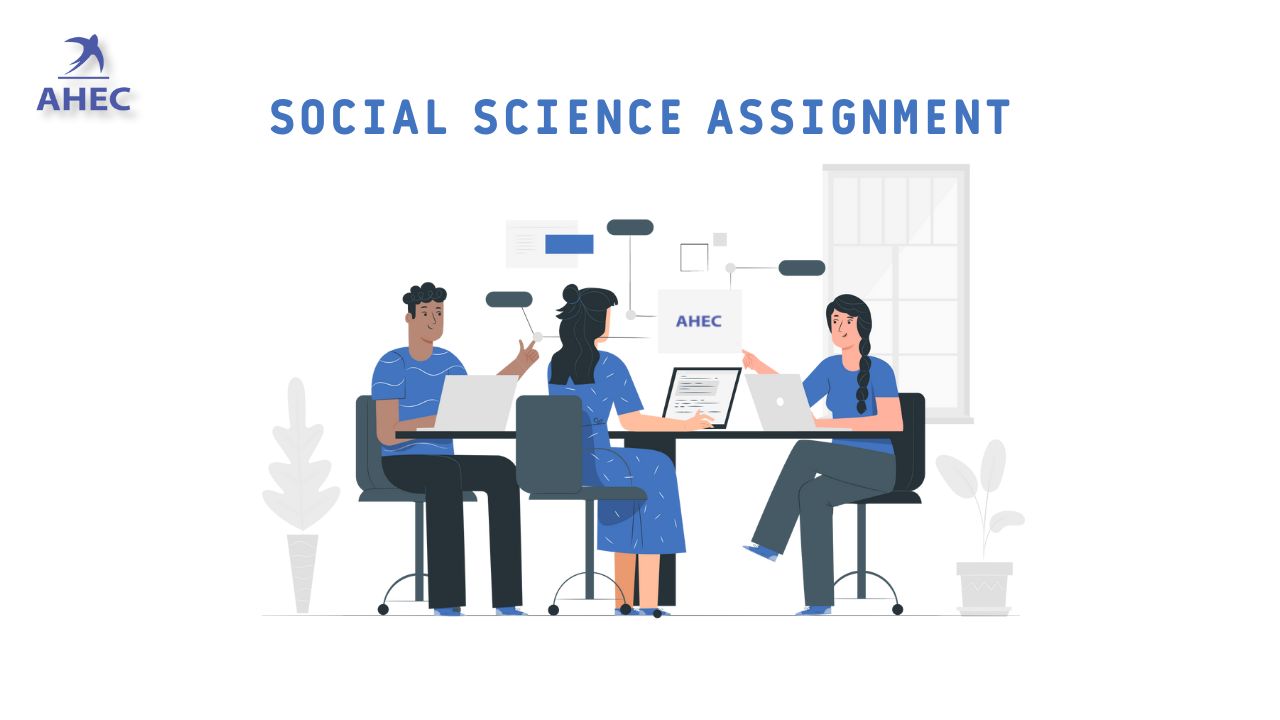The University of Arizona (Arizona, U of A, UArizona (also known as UA) is a private land-grant university for research located in Tucson, Arizona. Established in 1885, under the thirteenth Arizona Territorial Legislature, it was the first university to be established in the Arizona Territory. The university is a part of both the Association of American Universities and the Universities Research Association. In the former, it's the only member that is from in the State of Arizona. It is classified as "R1 Doctoral Universities with Highly Research-Intensive". The this University of Arizona is one of three institutions that is governed by the Arizona Board of Regents. In 2021 the university had 49,471 students at 19 separate schools and colleges, including those at the University of Arizona College of Medicine located in Tucson and Phoenix as well as Phoenix and the James E. Rogers College of Law, as well as being associated with two medical schools (Banner - University Medical Center Tucson and Banner - University Medical Center Phoenix). In 2021, the University of Arizona acquired Ashford University that was a previously for-profit institution with more than 30000 students and rebranded it to The University of Arizona Global Campus.
This is the University of Arizona Rankings
-
268 on the QS World University Rankings, 2022.
-
#171-180 in the Graduate Employability Rankings, compiled by QS Global World Rankings, 2022
-
#50 on the World University Rankings by Times Higher Education 2022
-
135th in US College Rankings by Times Higher Education 2022
-
#103 in National Universities by US News and World Report 2022
-
The #122 school in the Best Value Schools by US News and World Report, 2022
-
The #46 spot in the Most Innovative School according to US News and World Report 2022
-
#46 in the list of Top Public Schools by US News and World Report, 2022.
University of Arizona Campus
Its 179 structures are situated on the 380-acre property (1.5 kilometers) situated in central Tucson, located about 1 mile (1.6 kilometers) northwest of downtown. Roy Place, a prominent Tucson architect, designed a number of the first buildings, such as Centennial Hall, the Arizona State Museum buildings (one of which was the 1927 main library) and Centennial Hall. Place's utilization of red brick established the style for the brick-colored facades that form the basis of the majority of UA buildings. Nearly every UA construction is red brick as a primary part of its architecture or, at least, a decorative accent to blend in with other buildings on campus. buildings.In the 30s, Place revamped the university's masterplan, designed by his architectural collaborator John Lyman in 1919 and inspired by that of the campus of the University in Virginia.The campus is split into four quadrants. The south and north sides of the campus are defined by a grassy area known as the Mall that extends across the entire length of Old Main eastward to the campus' eastern boundary located at Campbell Avenue (a major north-south arterial street). The east and west sides of campus are separated through Highland Avenue and the Student Union Memorial Center (see below).The Science and Mathematics buildings tend to be located within the Southwest quadrant. the athletic facilities for intercollegiate sports to the southeast; and the humanities and arts buildings in the northwestern part (with dance departments being the main distinction as its principal facilities are located at the east side of the campus) as well as the engineering buildings located in the north central part of the campus. Space and optical science buildings are located on the east end of campus, near the stadiums for sports and in the (1976) principal library.The Computer Science department's webcam offers a live feed of the campus from the high point of the Gould and Simmons building (the most tallest building for classrooms on campus with a height of 10,010 feet). It is located in the Berger Memorial Fountain located at the west end to Old Main honors the UA students who perished during World War I, and is dated to 1919. It is believed that the University of Arizona generates renewable energy using solar panels (photo photovoltaic) which have been put in Place in campus structures. In 2011 The Sustainable Endowments Institute gave the University of Arizona a College Sustainability Report Card score of "B.In 2015 the university was able to open the ENR2 which is expected to be one of the "greenest" buildings in the campus. It will feature features such as an advanced cooling system, as well as a 55,000 gallon water harvesting tank. The design is based on an open slot canyon in the Sonoran Desert, the 150,000 square. feet. structure is focused on adapting and decreasing the carbon footprint.The oldest buildings on campus are located west from Old Main. The majority of the buildings east on Old Main date from the 1940s until the 1980s (a time of rapid expansion on campus as well as in Tucson overall) There are some recent structures built during the period between 1990 and 1990.
The Student Union Memorial Center
The Student Union Memorial Center, located on the north of the Mall east of Old Main, was completely rebuilt between 2000 to 2003. It was built over a 270,000 square-foot (25,000 m2)) structure which was initially constructed in 1951. It was later expanded in the 1960s and into the early 1970s.The Student Union has forty-five thousand square feet (37,600 square meters) of space over four levels. It has 14 eateries, a food market, two-level bookshop with a section for office supplies and 23 meeting rooms. There are also eight lounge spaces (including ones dedicated to USS Arizona), a computer lab as well as an U.S. Post Office, and a copy centre.
The structure was designed to reflect that of the USS Arizona (BB-39). The sculptures are scattered throughout the grounds, and decorate your surroundings with dog tags' chimes or the hues of light refracted in the memory of those who been a part of the service. The bell in the USS Arizona, one of the two bells saved from the ship following an attack at Pearl Harbor, has a permanent location within the Clock Tower of the Student Union Memorial Center. The bell was brought to campus in the summer of 1946. Bells were rung 7 times during the Wednesday third of each month at 12:07 pm . This was in honor of the battleship's sinking on the 7th day of December 1941. The bell was rung to honor the people who were enrolled at the UA as well as following home victories in football over any team other than others Arizona schools. In the month of December, 2020 it was announced upon the request from the U.S. Navy, who still holds the bell and is in the interest of preserving the significance of the artifact's historical significance that the bell would not be rung any more.
The Arboretum is located at The University of Arizona
The majority of the campus is designated as an arboretum. All kinds of plants from all over the world are listed on a self-guided walk. Its Krutch Cactus Garden includes the highest Boojum plant in Arizona. The campus also has numerous olive trees, some that were planted by Professor. Robert H. Forbes. Some of these trees are more than a hundred years old.
University of Arizona Organization
It is the University of Arizona, like its twin universities Arizona State University and Northern Arizona University is administered through the Arizona Board of Regents or the ABOR which is a 12-member body. Eight members of the ABOR have been appointed by the governor for consecutive eight-year terms. Two students are appointed to the board on two-year terms and the first year being an apprentice year that is non-voting. The Governor and superintendent of Public Instruction serve as voting ex-officio board members. ABOR offers "policy direction" and provides oversight to the three major universities with degrees as required by Title 15 of the Arizona Revised Statutes.Robert C. Robbins, M.D., was named the 22nd president of the UA on the 7th of March 2017.He started his presidency on June 1, 2017. Prior to that, he served as the CEO and president of the Texas Medical Center in Houston from 2012 until the year 2017. In earlier positions, Robbins was professor and chair of the Department of Cardiothoracic Surgery at Stanford University School of Medicine as well as the founder director of the Stanford Cardiovascular Institute, president of the International Society of Heart and Lung Transplantation and the president of the Western Thoracic Surgery Association.Robbins succeeded Ann Weaver Hart, M.A., Ph.D., who was the first university's female president. Robbins was the only candidate to be the next UA president following the announcement that Hart stated that she was not seeking to extend her term beyond the July 30, 2018, expiration date. In her time as president, Hart led the university's first comprehensive strategic business and academic plan, and signed an agreement in partnership with Banner Health to support the Biosciences Research and Medical education initiatives.Notable previous head of this university are: Hart (formerly president of Temple University); interim president Eugene Sander, who retired from the school after 25 years as an administrator and educator and administrator, with nearly a year in the interim presidency position; Robert N. Shelton started his presidency in 2006 before resigning during the spring of 2011, to take on as president of the Fiesta Bowl, (a BCS college football event that is held every year in the Phoenix region). The predecessor of Shelton, Peter Likins, vacated his post following the conclusion of the academic term 2005-2006.
University of Arizona History
After the passing of the Morrill Land-Grant Act of 1862 The demand for an institution of higher learning in Arizona increased. In the Arizona Territory, its "Thieving Thirteenth" Legislature approved the University of Arizona in 1885 and chose that city Tucson to be the recipient of the funds to construct the school. Tucson wanted to receive an appropriation to fund the mental hospital of the territory with an allocation of $100,000 rather than the 25,000 that was allocated to the sole university of the territory (Arizona State University founded in 1885, but it was conceived as the normal school of Arizona was not an official university).Flooding in the Salt River delayed Tucson's legislators for a while, and by the time they got to Prescott back-room deals to distribute the most sought-after territorial institutions had already been signed. Tucson was generally disappointed being awarded what was thought to be an inferior reward.
In the absence of any parties that would donate land to the new institution, residents of Tucson were ready to pay back the funds in the hands of the Territorial Legislature until two gamblers and a saloon owner agreed to give the land away for the construction of an educational school.Construction of Old Main, the first structure on campus, began on the 27th of October in 1887. The first classes were held at first in the year 1891. There were thirty-two students on Old Main, which is still being used today.Because there were no high schools within the Arizona Territory, the university offered separate preparatory classes for the initial 23 years it was in operation.
To combat COVID-19 In response to COVID-19, the University of Arizona announced temporary furloughs and pay cuts to its employees of 15,000 in April 17th, 2020 in the wake of the Tucson campus was shut down because of the COVID-19 disease. All employees earning more than $150,000 annually were furloughed and the duration was determined by the employees' salary. If employees earn more than $150,000 annually pay reductions of 15 percent or 20 percent were instituted.Also in the year 2020 it was announced that the University of Arizona announced it was purchasing Ashford University from Zovio and named it The University of Arizona Global Campus.
University of Arizona Research
Arizona is classified under "R1: Doctoral Universities - Research activity that is very high". The research budget of the university for fiscal year 2018 was $687.1 million. Arizona is the fourth-highest-ranked publicly-funded university in NASA to conduct research. The UA was awarded more than $325 million to fund the Lunar and Planetary Laboratory (LPL) to manage NASA's 2007-2008 spacecraft mission Mars to study the Martian Arctic and also $800 million for the OSIRIS-REx mission, which is the first mission to be awarded in U.S. history to sample an Asteroid. The work of the LPL on and around the Cassini satellite orbiting Saturn is more extensive than any other institution in the world. This U of A laboratory designed and managed the atmospheric radiation research as well as the imaging probe.The UA operates the HiRISE camera, which is part of the Mars Reconnaissance Orbiter. Utilizing this HiRISE camera, in 2011 UA Alumnus Lujendra Ojha along with his group found evidence that liquid water existed on Mars's surface. A discovery that was confirmed by NASA in the year 2015. UA has more NASA grants per year than the top nine NASA-funded universities. In March of 2016 the University of Arizona's Lunar and Planetary Laboratory is active in ten spacecraft mission: Cassini VIMS; Grail; the HiRISE camera that orbits Mars and the Juno mission that orbits Jupiter; Lunar Reconnaissance Orbiter (LRO); Maven, that will investigate Mars the upper atmosphere as well as its interactions to the Sun; Solar Probe Plus, an historic mission to the Sun's atmosphere very first time, Rosetta's ViRTIS and WISE. Also, OSIRIS-REx is the first U.S. sample return spacecraft to orbit a close-earth asteroid that launched on September 8, 2016.UA is a member of the Association of Universities for Research in Astronomy which is a group of research institutions that conduct research in Astronomy. The group operates observatories and telescopes, including Kitt Peak National Observatory just near Tucson. UA is an affiliate of the Association of American Universities, and is the only representative of Arizona in this group. Directed by Roger Angel, researchers in the Steward Observatory Mirror Lab at UA collaborate to create the world's top telescope. The telescope is known by the name of Giant Magellan Telescope, it will create images that are 10 times sharper than the images from the earth-orbiting Hubble Telescope. The telescope is expected to be completed by 2021. GMT will eventually be priced at $1billion. Researchers from nine institutions are working hard to get funding to complete the mission. The telescope will comprise seven 18-ton mirrors that are capable of producing sharp images of volcanoes as well as riverbeds on Mars as well as mountains on the moon at forty times more quickly than currently operating large telescopes in the world. These mirrors from the giant Magellan Telescope will be constructed in the U of A and transported to a permanent mountaintop location located in the Chilean Andes where the telescope will be built. National Science Foundation funded the iPlant Collaborative in 2008, with an award of $50 million. It was in 2013 that the iPlant Collaborative received a $50 million renewal grant.Rebranded in the latter half of 2015 as "CyVerse" the collaborative cloud-based platform for managing data expands beyond the realm of life sciences and into cloud computing to offer access across all science disciplines.In June of 2011 the university announced that it was taking full control for Biosphere 2. Biosphere 2 scientific research facility located in Oracle, Arizona. Biosphere 2 was constructed by private developers (funded predominantly from Texas businessman and Philanthropist Ed Bass) with its first closed system research experiment starting in 1991. The university has been the official manager of Biosphere 2 for research purposes since 2007.In the year 2018, UA was awarded funding by the Pioneer Fund, a non-profit institute that supports research on eugenics and racism in the sciences. The funds were requested by Aurelio Jose Figueredo who is the director of the graduate program that studies the human behavioral and evolutionary psychological. The funds from the grant were utilized for Figueredo in order to travel to 2016's London Conference on Intelligence, which is where talks on eugenics are made. Figueredo has also read and reviewed articles fora journal that has advocated for a racial hierarchy. Figueredo has denied eugenics and the notion of racial superiority.
University of Arizona Libraries
Based on the data from the 2015-2016 Association of Research Libraries' "Spending by University Research Libraries" report, UA libraries are ranked as the 37th largest Library of a university across North America (out of 114) in terms of investment.As of 2012, the library system at the University of Alabama has more than six million volumes of printed books, 1.1 million electronic books as well as 74,000 electronic journals. In addition, the Main Library opened in 1976, functions as the Library's reference periodicals, administrative, and reference center; the majority of the major collections are housed in this. Its Main Library is on the southeast corner of the campus close to McKale Center and Arizona Stadium.In 2002 The Integrated Learning Center (ILC) was constructed as a 20 million, 100,000 square-foot (10,000 square meters) computer center that is designed to be used by students who are enrolled. The ILC includes auditoriums, classrooms and a courtyard that houses vending machines, as well as an expanded computer lab, which includes many dozen workstations as well as 3D printing. 3D printing and computers are available to all the public (with some limitations) and also by UA staff, students, and staff. The majority of the ILC was built underground, under the east side of the Mall. This ILC is connected to the lower floor of the Main Library. In connection with the construction, additional office space in the Library was built on the 5th floor. The Special Collections Library is close to the Main Library. It was established in the year 1958 and is home to items that are primarily focused on Arizona as well as Southwestern history borderlands studies, as well as literature. The Weaver Science and Engineering Library is located in a building dating from the 1960s, which houses periodicals and volumes that pertain to these areas. Its Music Building (on the northwest quadrant of the campus, where a lot of the disciplines of fine art are located) is home to The Fine Arts Library, including the reference collection for architecture as well as music (including recordings, sheet music as well as listening stations) as well as photography. A small library is located within the Center for Creative Photography, located within the fine arts complex. It is dedicated to the art and the science of photography. Its Law Library is in the law building (James E. Rogers College of Law), located at the junction of Speedway Boulevard and Mountain Avenue.



















































































































































.png)









